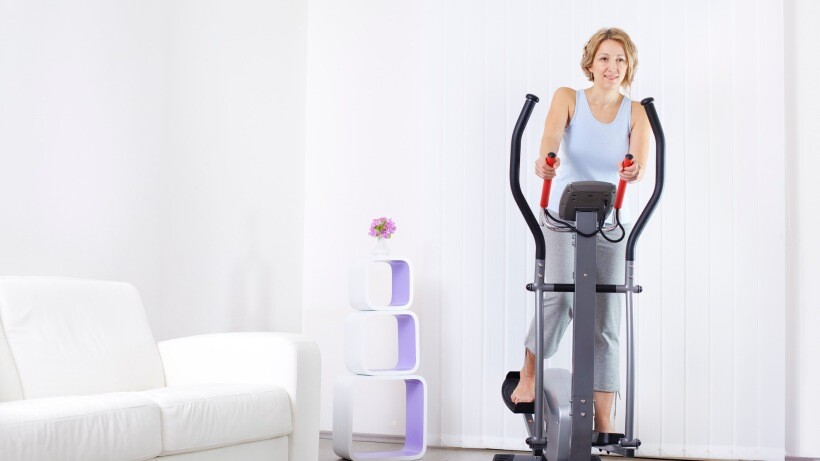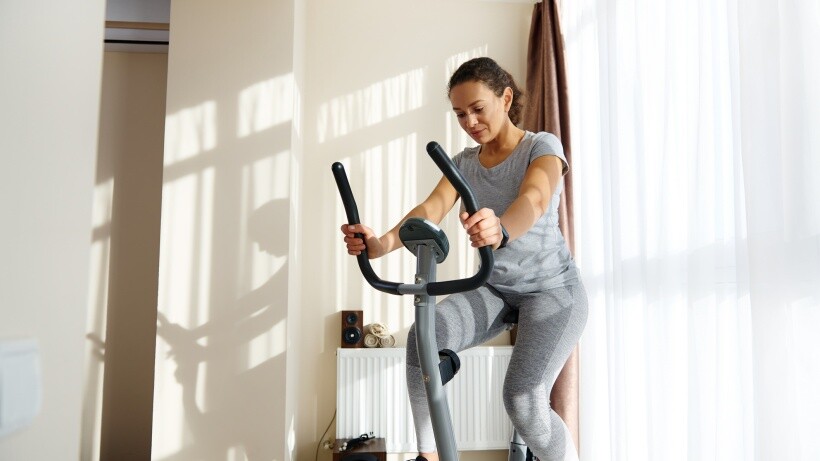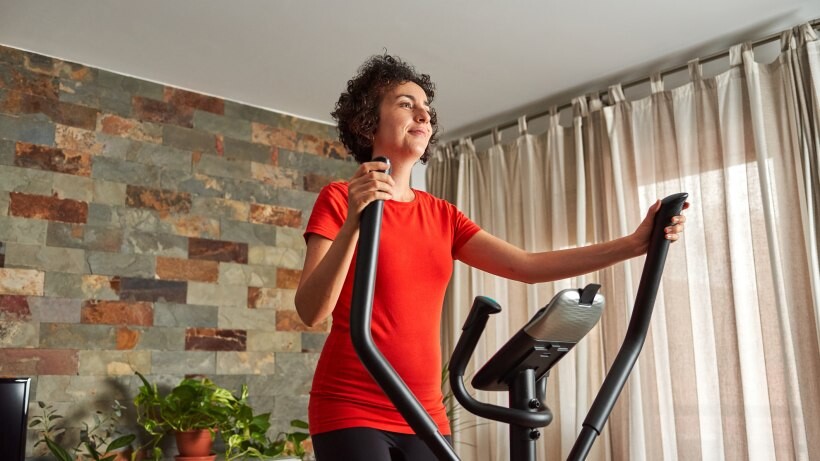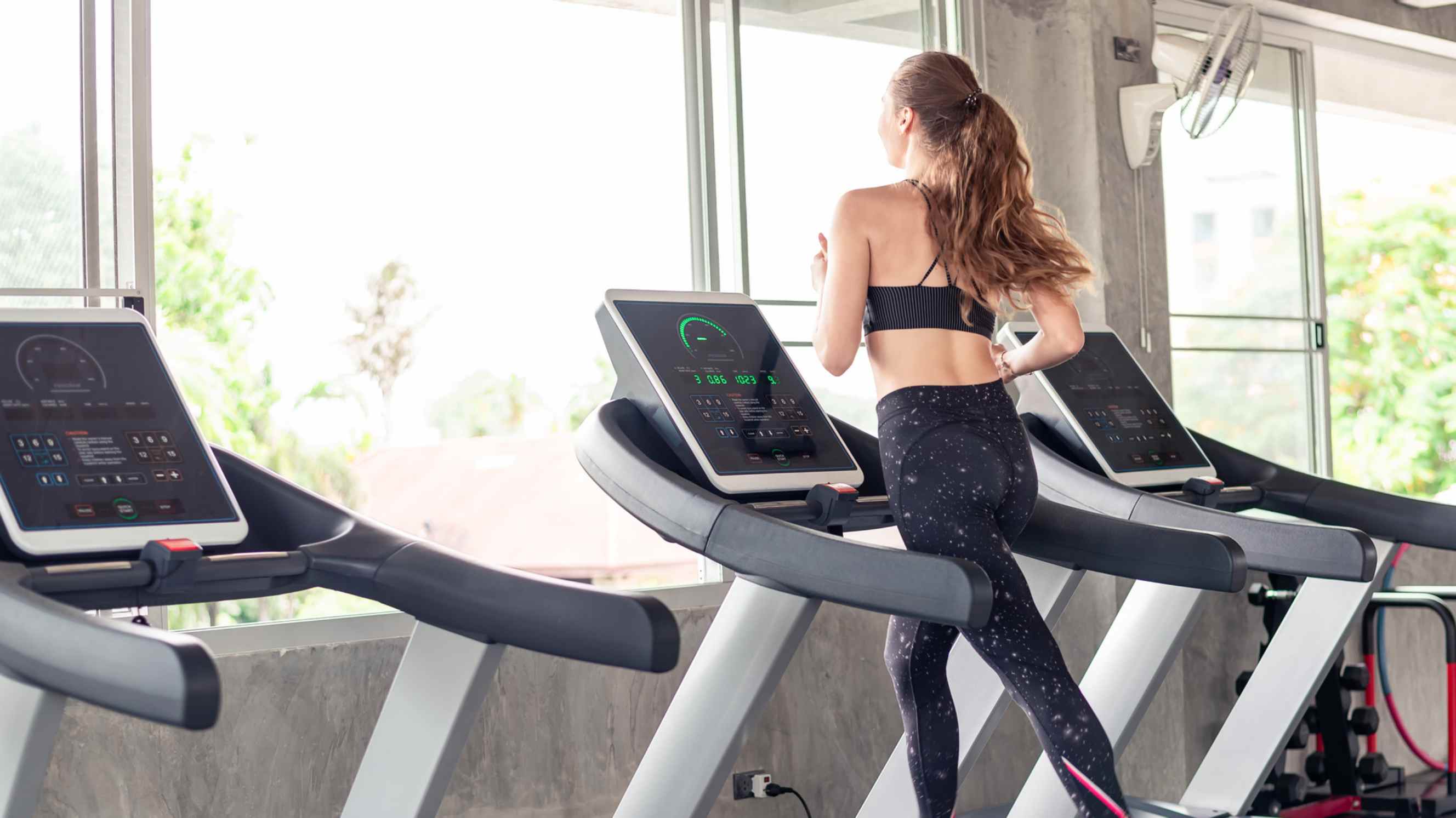- Home/
- Comparisons/
- Assembly/
- Elliptical vs. Treadmill

Elliptical vs. treadmill: Which is the better choice?
Comparing the elliptical and treadmill equipment based on their cardio benefit, joint impact, assembly process, and more.
Hire an expert assemblerLast Updated on
Key Facts
- An elliptical is a fitness machine that allows low-impact, full-body workouts that simulate stair climbing, walking, or running without causing excessive pressure on the joints.
- A treadmill is a popular cardio machine that lets users walk, jog, or run indoors with adjustable speeds and inclines to mimic natural terrain and optimize fitness levels.
Deciding on the best equipment for home workouts can often feel like navigating through a maze of choices, each promising to be the key to achieving your fitness goals. Two of the most sought-after machinery are undoubtedly the elliptical and the treadmill.
Each brings a unique set of benefits to the table, catering to different needs, preferences, and fitness objectives. However, the question of elliptical vs. treadmill remains. Which is the best option for home workouts?
This comparison guide aims to help you make a decision that aligns with your fitness aspirations and lifestyle. Taking your pick doesn’t have to be so tough.
What is an elliptical?
Exercise on an elliptical offers a smooth, fluid motion that combines upper and lower body conditioning. Because it’s designed to replicate the motion of walking, running, and stair climbing, it doesn’t really place undue stress on the joints.
Elliptical is excellent for cardiovascular workouts and full-body toning. Another popular elliptical exercise benefit is its low-impact nature, which makes it ideal for individuals recovering from injuries.
What is an elliptical good for? Well, it provides an effective cardiovascular workout that improves heart health, boosts stamina, and aids in weight loss.
When it comes to elliptical machine vs. running debates, the former stands out for its joint-friendly workouts and the ability to engage more muscle groups simultaneously. It’s essentially a more balanced exercise regimen. Plus, you can do it at home!
What is a treadmill?

A treadmill is a well-known exercise machine designed primarily for walking, running, or jogging in place. It features a moving belt that serves as the ground’s movement. It adjusts to the user’s speed and inclines to simulate outdoor terrains.
Treadmills are renowned for their versatility in cardio workouts, as they allow both high-intensity interval training (HIIT) and steady-state cardio exercises. They also cater to a range of fitness levels, from beginners to seasoned athletes.
Another thing, treadmills provide a controlled environment that is conducive to focused aerobic workouts. Therefore, they’re particularly beneficial for those looking to improve cardiovascular health, increase endurance, and promote weight loss.
Exercise bikes are common contenders to treadmills because they often serve the same functions. However, the latter’s straightforward design and ease of use make the treadmill a staple in both home gyms and fitness centers worldwide.
Treadmill vs. elliptical: Which provides a better home workout?
When considering the purchase of home workout equipment, the choice between a cross trainer vs. treadmill is almost always a struggle. After all, they both cater to various fitness goals, and each has its own distinct advantages.
Is an elliptical good? Or maybe the treadmill is the way to go for you? Regardless of your initial pick, this elliptical machine vs. treadmill comparison guide will talk about each factor that will surely matter to you.
In terms of cardiovascular workout

Both the elliptical and treadmill are effective for cardiovascular workouts, but they offer different benefits.
An elliptical provides low-impact cardio that engages both the upper and lower body, which can be beneficial for those seeking a full-body workout. On the other hand, a treadmill tends to offer a more intense cardio session that is effective for building endurance and promoting weight loss.
The high-impact nature of running or jogging on a treadmill is excellent for strengthening the heart and lungs. Although, it may not suit everyone, especially those with knee or back issues.
So, what is better, an elliptical machine or a treadmill? The choice largely depends on your personal fitness goals. It’s also wise to think ahead of health considerations and which form of exercise you find more enjoyable and sustainable.
In terms of joint impact

When comparing the joint impact of an elliptical versus a treadmill, the elliptical is generally kinder to the joints. This is primarily because it involves a smooth, elliptical motion that mimics natural movement patterns without the harsh impact on the knees, hips, and back.
In contrast, the treadmill subjects the body to significant impact with each footstrike. This is particularly the case when it’s set on running or intense jogging. This can lead to strain and discomfort in individuals with pre-existing joint problems or those who are prone to such issues.
Therefore, people who are just now considering the benefits of adding exercise to their daily routine would probably benefit more from an elliptical. It’s more beginner-friendly and doesn’t really require training before getting started.
In terms of muscle engagement

The elliptical presents an advantage by providing a full-body workout that targets various muscle groups simultaneously. It engages the upper body, including arms and shoulders, through the use of moving handles. Additionally, it works the core and lower body muscles, such as the quadriceps, hamstrings, calves, and glutes, thanks to its elliptical motion.
On the contrary, a treadmill primarily focuses on the lower body, significantly engaging the legs and core, especially when adding an incline to mimic uphill running. While the intensity of a treadmill workout can lead to high-calorie burn and improve cardiovascular fitness, it lacks the upper body component that an elliptical offers.
In terms of calorie burn

When comparing the elliptical to the treadmill in terms of the amount of calories they burn, the latter generally wins. This is because a treadmill allows higher-intensity workouts, particularly through running or steep incline walking. This intensity directly correlates with a higher energy expenditure.
However, the elliptical, with its ability to engage multiple muscle groups simultaneously, also ensures a substantial calorie burn that can closely compete with that of a treadmill. This is especially the case at high resistance levels or vigorous speeds.
So, can you lose weight on the elliptical machine? Well, yes, but you have to ensure consistency and intensity. Meanwhile, a typical treadmill fat-burning workout would work even with minimal effort. However, all of this still depends on your overall fitness regime.
In terms of the assembly process

Assembly for both an elliptical and a treadmill can vary significantly depending on the model and manufacturer. This includes setting it up for the first time and re-assembling it if you ever move your home gym somewhere else.
Generally, treadmills can be more straightforward to assemble, but they’re often heavier and bulkier. So, the initial setup is more challenging, and you should learn how to move it properly before trying to do so. This typically involves setting up the base unit, securing the deck, and attaching the console and handles. Treadmill maintenance is also something worth considering beforehand.
Ellipticals, on the other hand, may have a more complex assembly due to their multiple moving parts and alignment requirements. This includes attaching the arms, pedals, and, in some cases, multiple linkage systems. However, once assembled, they tend to occupy less floor space compared to treadmills and are easier to move.
Consider your technical skills, patience, and the available space in your home when choosing between an elliptical and a treadmill based on the assembly process. If you find the assembly process to be challenging, it may be worth considering hiring an expert assembler as your best option.
In terms of cost

When comparing an elliptical/cross trainer vs. a treadmill, the costs can vary widely based on factors such as brand, functionality, and technology incorporated.
On average, basic treadmills start at approximately $149.99, likely due to their simpler mechanical structure and the vast market availability. However, high-end models equipped with advanced features like interactive training platforms, robust motors, and larger running surfaces can drive the price upwards of $6,485
Ellipticals, alternatively, begin at an entry-level price of about $99. Their price can also escalate significantly for models that include enhanced ergonomic designs, adjustable stride lengths, and integrated entertainment systems, peaking at around $14,440. It’s noteworthy that the advanced models of ellipticals often incorporate more sophisticated technology to mimic a natural movement pattern, which can contribute to the higher end of their price range.
Enjoy a smooth workout: Experience hassle-free elliptical and treadmill assembly with Airtasker
Setting up your home gym with the right equipment can significantly enhance your fitness routine. Whether it’s an elliptical or treadmill assembly, the process can be straightforward as long as you don’t tackle it alone.
Airtasker lets you find professional workers skilled in fitness equipment installation and assembly. They’ll ensure your equipment is set up safely and correctly so you can focus on achieving your fitness goals.
Post a task today and connect with experienced professionals who are ready to help with your home gym setup needs. They’re just a few clicks away!
Elliptical vs. Treadmill
Elliptical |
Treadmill |
|
| Cardiovascular Workout |
Offers full-body, low-impact cardio workouts |
Provides intense, high-impact cardio sessions |
| Joint Impact |
Low impact on joints |
Higher impact; can stress joints |
| Muscle Engagement |
Engages upper and lower body simultaneously |
Primarily targets lower body and core |
| Calorie Burn |
Burns fewer calories than treadmill per session |
Higher calorie burn due to intensity |
| Assembly Process |
Complex assembly due to multiple moving parts |
Simpler assembly, but heavier and bulkier |
| Cost |
Higher initial cost, with advanced features |
More affordable entry points, varied prices |
FAQs on elliptical and treadmills
Ellipticals can offer limited weight-bearing exercise, which is less effective for building bone density compared to activities like walking or running.
The effectiveness depends on your fitness goals. Ellipticals can provide a low-impact, full-body workout, while treadmills are excellent for improving cardiovascular health and bone density.
Choosing between an elliptical and a treadmill depends on individual fitness levels and goals. Ellipticals are great for low-impact workouts, while treadmills are ideal for runners and those looking to improve their bone health.
Find assemblers, fast
Post a task
Related articles











